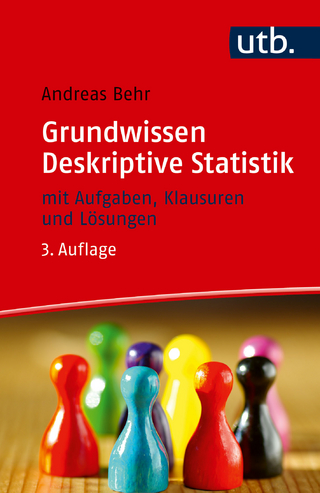
Regional Economic Issues, Central, Eastern, and Southeastern Europe
Seiten
2016
International Monetary Fund (IMF) (Verlag)
978-1-5135-9086-8 (ISBN)
International Monetary Fund (IMF) (Verlag)
978-1-5135-9086-8 (ISBN)
- Titel z.Zt. nicht lieferbar
- Versandkostenfrei innerhalb Deutschlands
- Auch auf Rechnung
- Verfügbarkeit in der Filiale vor Ort prüfen
- Artikel merken
9781513590868
Economic growth remains solid in much of Central, Eastern, and Southeastern Europe (CESEE). Outside the Commonwealth of Independent States (CIS), growth has continued at a good pace on the back of accommodative macroeconomic policies as well as buoyant consumption supported by strong real wage and employment growth. In Russia, the pace of economic contraction has moderated, as the economy appears to have adjusted to lower oil prices and the sanctions shock. Other CIS economies are gradually exiting from recessions on improved external demand. For the region as a whole, GDP growth is projected to reach 1.3 percent in 2016 and 2.1 percent in 2017, largely reflecting the improved outlook in the CIS. Given mediocre prospects for potential growth and a cyclical rebound near completion outside the CIS, current growth may be difficult to sustain. With several years of growth near 3 percent, there are signs that output gaps appear closed outside the CIS, as unemployment rates are falling to pre-crisis levels, real wages are growing strongly, and credit growth is reaccelerating. However, inflationary pressures are still low and external balances healthy.
Still, given subdued productivity growth and adverse demographics, these countries may not be able to maintain strong growth without renewed widening of external imbalances. While some risks to the outlook have diminished, downside risks still dominate. Some risks, such as the pace of monetary normalization in key advanced economies and the refugee crisis in Europe, appear less prominent than six months ago. Other risks, however, such as those associated with rising political discord, have become more pronounced. Despite its modest impact so far, the longer-term effects of Brexit-the U.K. vote to leave the European Union-are yet unclear, given the uncertainty about the new U.K.-EU economic arrangements. Policies need to strike the right balance between supporting near-term growth and rebuilding fiscal space. Over the near-term, monetary policy is expected to remain accommodative or to ease in countries where it is tight, which seems generally appropriate given expected inflation. At the same time, fiscal policy appears to be neutral or expansionary in many countries.
In those economies where growth has been running above potential and output gaps are closing, this is no longer appropriate. Rather, the relatively good times should be used to rebuild fiscal buffers by following growth-friendly fiscal consolidation, which would also help reduce still high external debt levels.
Economic growth remains solid in much of Central, Eastern, and Southeastern Europe (CESEE). Outside the Commonwealth of Independent States (CIS), growth has continued at a good pace on the back of accommodative macroeconomic policies as well as buoyant consumption supported by strong real wage and employment growth. In Russia, the pace of economic contraction has moderated, as the economy appears to have adjusted to lower oil prices and the sanctions shock. Other CIS economies are gradually exiting from recessions on improved external demand. For the region as a whole, GDP growth is projected to reach 1.3 percent in 2016 and 2.1 percent in 2017, largely reflecting the improved outlook in the CIS. Given mediocre prospects for potential growth and a cyclical rebound near completion outside the CIS, current growth may be difficult to sustain. With several years of growth near 3 percent, there are signs that output gaps appear closed outside the CIS, as unemployment rates are falling to pre-crisis levels, real wages are growing strongly, and credit growth is reaccelerating. However, inflationary pressures are still low and external balances healthy.
Still, given subdued productivity growth and adverse demographics, these countries may not be able to maintain strong growth without renewed widening of external imbalances. While some risks to the outlook have diminished, downside risks still dominate. Some risks, such as the pace of monetary normalization in key advanced economies and the refugee crisis in Europe, appear less prominent than six months ago. Other risks, however, such as those associated with rising political discord, have become more pronounced. Despite its modest impact so far, the longer-term effects of Brexit-the U.K. vote to leave the European Union-are yet unclear, given the uncertainty about the new U.K.-EU economic arrangements. Policies need to strike the right balance between supporting near-term growth and rebuilding fiscal space. Over the near-term, monetary policy is expected to remain accommodative or to ease in countries where it is tight, which seems generally appropriate given expected inflation. At the same time, fiscal policy appears to be neutral or expansionary in many countries.
In those economies where growth has been running above potential and output gaps are closing, this is no longer appropriate. Rather, the relatively good times should be used to rebuild fiscal buffers by following growth-friendly fiscal consolidation, which would also help reduce still high external debt levels.
| Erscheinungsdatum | 05.10.2016 |
|---|---|
| Reihe/Serie | Regional Economic Outlook |
| Verlagsort | Washington, DC |
| Sprache | englisch |
| Maße | 152 x 229 mm |
| Themenwelt | Wirtschaft ► Volkswirtschaftslehre ► Ökonometrie |
| ISBN-10 | 1-5135-9086-3 / 1513590863 |
| ISBN-13 | 978-1-5135-9086-8 / 9781513590868 |
| Zustand | Neuware |
| Haben Sie eine Frage zum Produkt? |
Mehr entdecken
aus dem Bereich
aus dem Bereich
mit Aufgaben, Klausuren und Lösungen
Buch | Softcover (2023)
UTB (Verlag)
24,90 €
Set aus Lehr- und Arbeitsbuch
Buch | Softcover (2022)
De Gruyter Oldenbourg (Verlag)
35,95 €
Buch | Softcover (2024)
Vahlen, Franz (Verlag)
44,90 €


